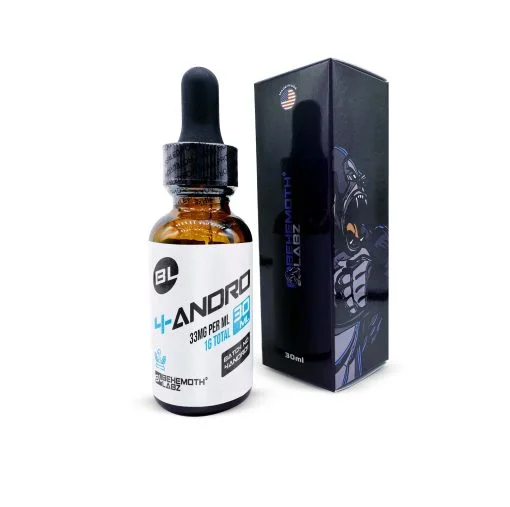SARMs
Do SARMs Expire? How Long Do SARMs Last?
When it comes to SARMs, knowing their shelf life is as important as understanding their possible research applications. Do SARMs expire, and if so, how long can we count on them for effective use in research studies?
SARMs are widely studied by most fitness enthusiasts, athletes, and other researchers. To get optimal results, active and pure SARMs are mostly used. If you don’t know which SARMs are degraded and how long they last in the system, delve into this comprehensive guide.
Understanding the Shelf Life of SARMs
Like other research supplements, Selective Androgen Receptor Modulators (SARMs) have a shelf life. It means that they degrade over time and may become less effective leading to a decrease in potency. Understanding the shelf life of SARMs is necessary for their effective use in research studies.
SARMs’ shelf life may depend on various factors including their chemical stability, packaging, and storage conditions. Generally, SARMs have a shelf life of 1 to 2 years. However, it may vary depending on their form, chemical composition, and providers’ commitment to quality and safety. This answers the question of whether SARMs expire.
Do SARMs Expire?
Yes, SARMs do expire. For example, Ostarine can be stable for about 2 years after which it becomes expired and less effective. However, unlike other foods and supplements, SARMs do not go bad. They just become less potent and unsuitable for use. But the good news is that most SARMs last longer if properly stored under the supervision of professionals.
When conducting research involving Selective Androgen Receptor Modulators (SARMs), it is essential to utilize chemically active and non-degraded compounds to ensure the integrity and reliability of experimental data. But how can researchers verify that the SARMs used in their studies are still active and have not undergone degradation or expiration?
How to Identify Whether SARMs Have Expired
Identifying SARMs’ expiration is related to signs of degradation. Some key signs may reflect that the product is unusable in research tests. The following signs may show that SARMs have gone past their time.
- Color Change: A change in the color of a particular SARM such as turning darker or becoming cloudy shows that it has been degraded and become less potent.
- Less Effectiveness: When a SARM becomes less effective when used in the study, this may show its expiry.
- Taste or Smell: In the case of liquid SARMs, a change in taste or smell shows their degradation.
How Long Do SARMs Last?
Generally, studies suggest that SARMs last for about 1-2 weeks in subject’s body. For example, when a single dose of 60 mg of Andarine and 30 mg of Ostarine is administered into the subject’s body, it can be detected for about 2 weeks in urine. However, the duration that SARMs last in systems of research subjects varies and depends on the specific type, half-life, and dosage.
Why is Understanding SARMs Expiry Date Important?
Understanding SARMs’ expiry data is important for several reasons. It is primarily required for safety, efficacy, and reducing side effects. Here is why knowing the expiry date of SARMs matters.
Efficacy: Most of the time, SARMs may lose their effectiveness leading to diminished performance. This may make your intended outcomes harder to achieve during your research investigation.
Safety: Clinical studies always ensure safety but degraded SARMs may lead to harmful byproducts. To cope with this, it is better to understand expired ones to avoid using them in investigations.
Reducing Side Effects: Expired SARMs often lead to adverse effects on research subjects. To minimize such effects, it is essential to know the degraded ones so as not to use them in investigations.
Regulating Longevity: For long-term use in studies, always know the shelf life of SAMRs. If they are stored properly, SARMs can be studied before their expiry date.
How to Increase the Longevity of SARMs?
To maximize the quality and longevity of SARMs, adhering to recommended composition, storage measurements, and handling practices is necessary. With proper protection, guidance, and care, all products including SARMs can work for longer periods. Some major careful considerations that may increase the longevity of SARMs are discussed below.
- Storage: The storing process varies and depends on the types of SARMs. Generally, SARMs should be stored at room temperature of 20-25°C to increase effectiveness while conducting studies. Also, keep them away from extreme heat and cold.
- Protection from Light: As many SARMs are sensitive to UV rays, protecting them from direct sunlight exposure may hasten their degradation.
- Air Tight Containers: Extensive exposure to air may cause oxidation of SARMs. Careful protection in airtight containers may increase their longevity.
- Follow Instructions: There are recommended instructions for proper storage. When instructions are followed, it can ensure high protection of the products. This may increase the duration for SARMs to work effectively.
Conclusion
Like other supplements and drugs, SARMs do expire. However, their longevity depends on proper storage, formulation, and usage practices. Most SARMs have approximately 1-2 years of shelf life when stored correctly in a cool, dry, and dark environment. Using degraded SARMs can compromise both efficacy and safety and lead to incorrect results. Always use quality and active SARMs from trusted vendors for your research studies.
FAQs
What is the best place to buy SARMs online?
When it comes to active SARMs, BehemothLabz is a trusted vendor for buying SARMs like RAD 140, Cardarine, MK-677, and more online. It provides top-rated SARMs for many scientific studies. Also, it is a trusted vendor providing 100% pure and active products.
How long can SARMs be stored?
According to clinical studies, SARMs may be stored for 4 weeks at -20°C. Similarly, these compounds may be stored for up to 2 weeks at 4°C. However, the storage time varies and depends on the types of SARMs.
How long are SARMs traceable?
SARMs are traceable for about 2 weeks in the urine of the subjects. According to studies, when SARMs are used to study their potential effects, they can be traced for about two weeks in the subject’s system. However, this time may vary and depend on the types of SARMs.
How long is Cardarine detected in urine?
Due to the extensive metabolism of Cardarine, it may be detected for up to 5 days in the urine of test subjects. However, this time may differ and depend on dosage and subject health.
References
- Narayanan, Ramesh, Christopher C. Coss, and James T. Dalton. “Development of selective androgen receptor modulators (SARMs).” Molecular and cellular endocrinology 465 (2018): 134-142
- Chakrabarty, Rima, et al. ““For research use only”: a comprehensive analysis of SARMs and related IPEDs purchased on local Australian websites between 2017 and 2018.” Performance Enhancement & Health 9.3-4 (2021): 100201.
- Negro-Vilar, Andres. “Selective androgen receptor modulators (SARMs): a novel approach to androgen therapy for the new millennium.” The Journal of Clinical Endocrinology & Metabolism 84.10 (1999): 3459-3462.











